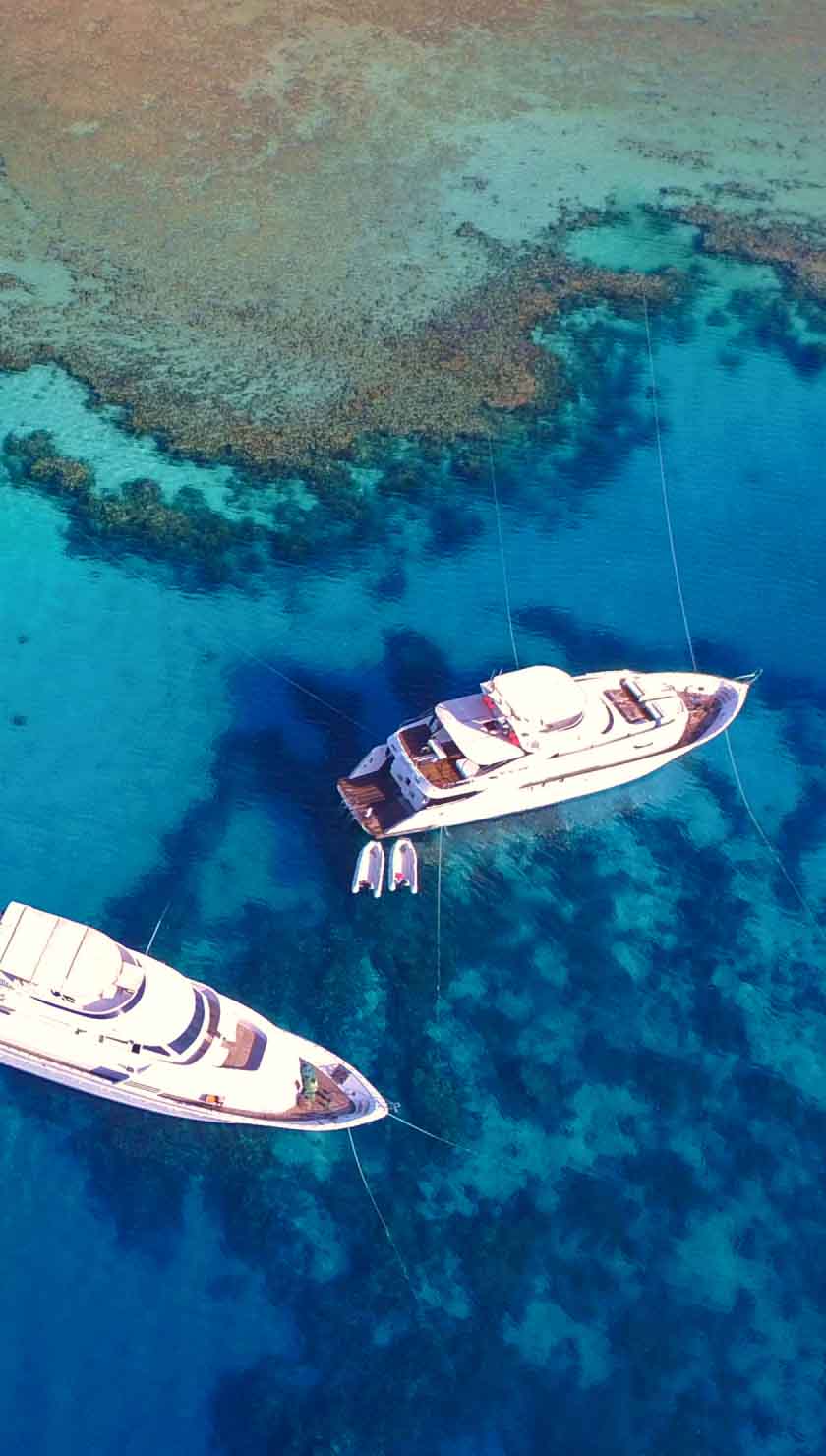Liveaboard Diving in Punta Carrion
Punta Carrión is often the first stop for liveaboards in the Galapagos. This is a fantastic introduction to the rich waters that bless these islands. Here you will encounter your first sharks, sea lions and rays on great boulder strewn reefs.
Luckily the dive sites are close to where most liveaboards start their itinerary which means you don't have far to go or too long to get in the water. Punta Carrión's dive sites are in the Itabacca channel between Santa Cruz and Baltra islands. The coastline is barren and rocky with a few scattered trees like many of the Galapagos islands but sally lightfoot crabs brighten the rocks up with their bright red backs and blue and yellow faces. There are also sea lions sleeping on the rocks and red kites and pelicans all around the Itabacca channel giving you a taste of the amazing wildlife that covers the Galapagos National Park.
Daily Schedule
Morning
Liveaboard days in Galapagos before 6 am so you will be up early for the first of two or three dives in Punta Carrión. For liveaboard divers a very light breakfast is the norm followed by a detailed dive briefing from your guide. Guides in Galapagos must be licenced by the Galapagos National Park Service with a rigorous exam on the wildlife and conservation in the region. The guides on Galapagos liveaboards have immense knowledge so the briefings can be some of the most informative you will ever take part in.
After the briefing you head straight to the dive deck to get your gear ready and check your Nitrox. Enriched air is highly recommended since you will be doing three or four dives a day and there is so much to see, you will want as long a dive time as possible.
Liveaboards will drop divers by tender or pangas, as they are known locally. These are small RHIBs with an outboard, making them perfect for getting into tricky parts of the shoreline. It is a synchronised backwards roll from these boats and a negative decent because of the swell. Punta Carrión has better conditions than some other dive sites but surge can still make floating on the surface uncomfortable.
Afternoon
A proper breakfast is normally served in between dives one and two. This is also a good time for charging cameras and GoPros as the dives in Galapagos can average around 50-60 minutes on Nitrox and there is so much to catch on film. After the break you will head back out on the pangas again slightly down the coast to the second dive site of Punta Carrión.
Evening
There are normally three dives at Punta Carrión instead of four. This is so that the boat can start early on the journey up north to the most remote islands of Galapagos, Darwin and Wolf. The afternoon sail is a great opportunity to see more of the topography of the Galapagos islands. If you are lucky you can also encounter some of the bird life with kites and pelicans often overhead or even perching on board for a rest. Pods of dolphins and occasionally whales can also be seen from the deck.
Punta Carrión Underwater
The Santa Cruz side of the channel will likely be the first proper dive after your check dive and the wildlife is spectacular. Groups normally descend in buddy teams and join up around 10 meters/33 ft. or wherever the nearest sheltered landing spot is on the bottom. Current is not as much of an issue at Punta Carrión as it is in other dive sites. It shouldn’t be necessary to hold onto the rocks either, as it is in many places.
Like much of the diving in Galapagos you will be on a rocky reef where you can see the smaller sea life but with a fantastic view into the blue to look for larger pelagics. Punta Carrión offers your first chance to dive with sea lions, which come down from the shore. They are big, fast and love to play with diver´s fins, bubbles and cameras so photographers should be careful they don’t take a playful bite of their flash!
White tip reef sharks are also often encountered here in numbers. This is a great opportunity for photographers as the white tips in Galapagos are not shy and the topography makes for some fantastic shots. Out in the blue you can see sea turtles, eagle rays and if you are lucky hammerheads and dolphins.
The maximum depth is approximately 30 meters/100 ft. but the best life is around 10-20 meters/33-65 ft. Punta Carrion is close to shore therefore visibility can be variable, from 5-10 meters or more depending on weather. Luckily the waters here are rich with a wide variety of fairly bold sea life so you won´t need to look too far for some amazing encounters and fabulous photographs.
Once you have had your fill you can make your three-minute safety stop keep an eye out for rays and hammerheads.
Top Tips for Punta Carrión
You will need a surface marker buoy, the liveaboards usually try to keep to one boat per dive site but there are day boats and a lot of snorkelers around.The pangas will come and pick you up from the surface and deliver you back to the liveaboard.
The check dive is normally done on the Baltra side of the channel before heading to Punta Carrion. You can see turtles here but it may be worth leaving your camera behind and checking the housing empty just in case.
Watch out for free swimming Moray eels in the reef, they are fairly harmless but can give you quite a fright.
Doing your safety stop in the blue is a chance to see more of the larger wildlife. Careful not to drift too far though.











